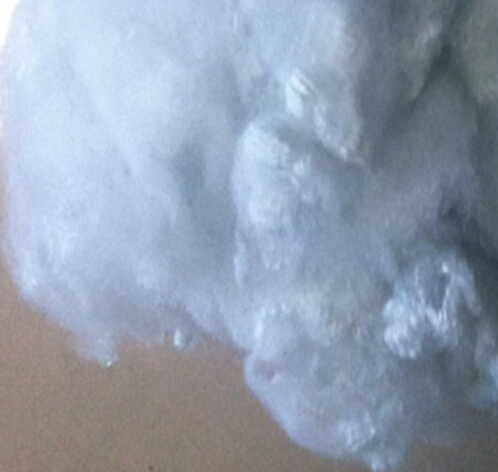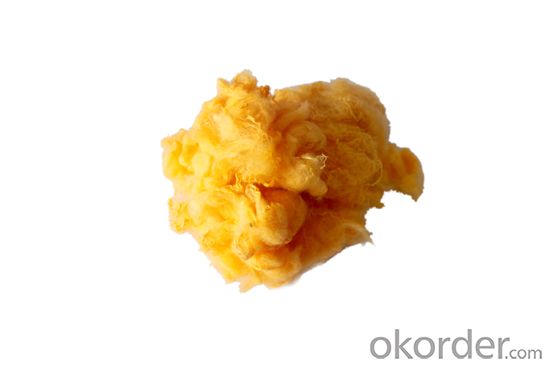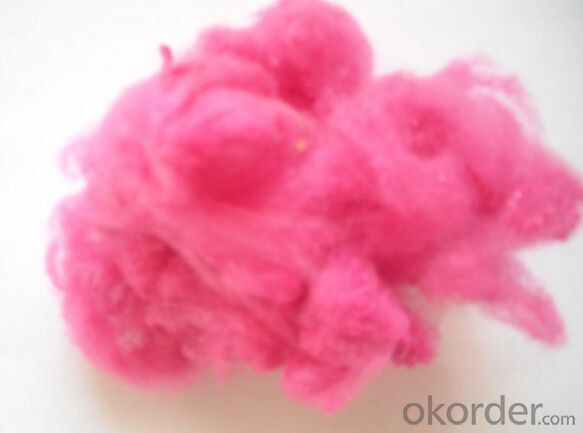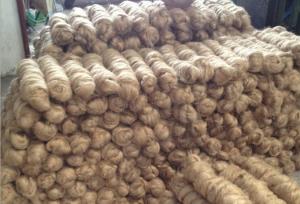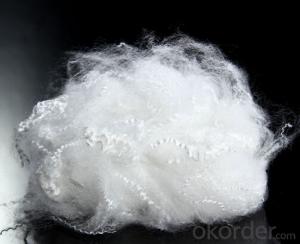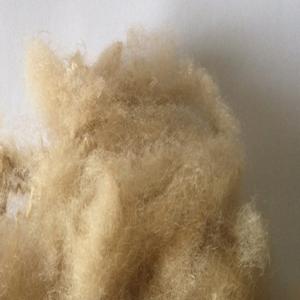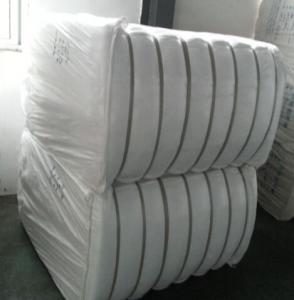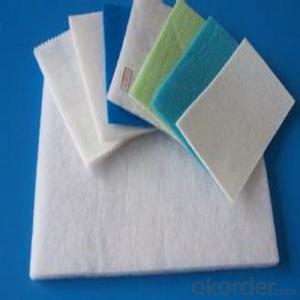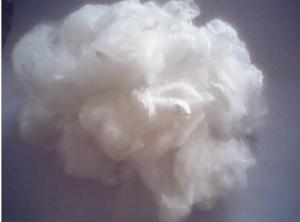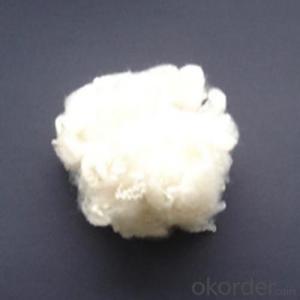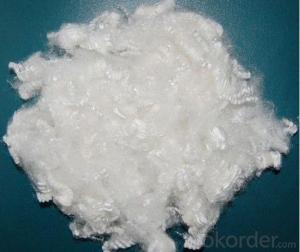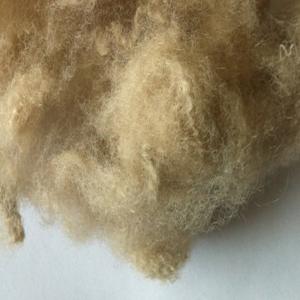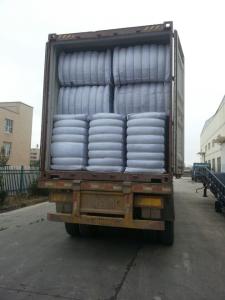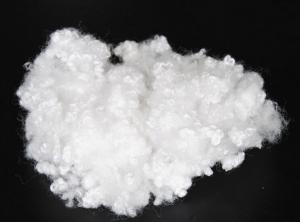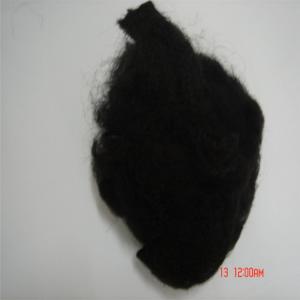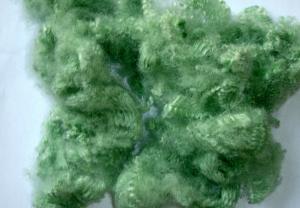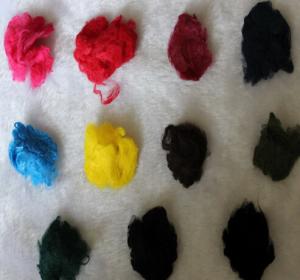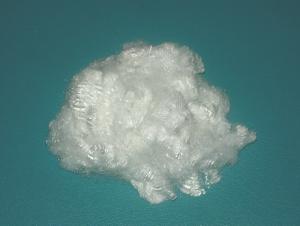Polyester Staple Fiber for Filling Pillows
- Loading Port:
- China main port
- Payment Terms:
- TT OR LC
- Min Order Qty:
- 10 m.t.
- Supply Capability:
- 5000 m.t./month
OKorder Service Pledge
OKorder Financial Service
You Might Also Like
The "Regenerated Hollow Polyester Staple Fiber" is the environment friendly recycling product, which is widely used as the raw materials of bedding and clothing, toy, cushion and nonwoven cloth.
1) Denier: 6D,7D.10D,12D,15D
2) Cut length : 32MM/38MM/51MM/64MM/76MM
3) Regenerated Hollow Conjugate Silicon and non-Silicon
4) Merits : Highly elastic , good rigidity and grade A quality
5) Weight: 300+-20kg/bale
6) Packing: woven bag
Feature of PET staple Fiber
1. Raw white color with very good elastic character
2. Super rebound degree, also called permanent elastic
3. Less flaw and better fluffiness.
4. Mainly using for filling pillows, quilts, cushions, sofa, toys, clothes and so on.
FAQ
We have organized several common questions for our clients,may help you sincerely:
1>How about your company?
A manufacturer & supplier focuses on the production of PP staple fiber which is used as the raw material of textile, automotive interior etc. We have exported this product to Amereica, Europe and South East Asia. Customized product is also available based on your detailed requirements.
2> What's the MOQ ?
We kindly recommend 1x40'HQ as the price would be economical based on large loading quantity.
3>How long can we receive the product after purchase?
It takes about 1 to 2 weeks to finish the production based on the specific production schedual. Then it will depend on the shipping time from loading port to the destination port.
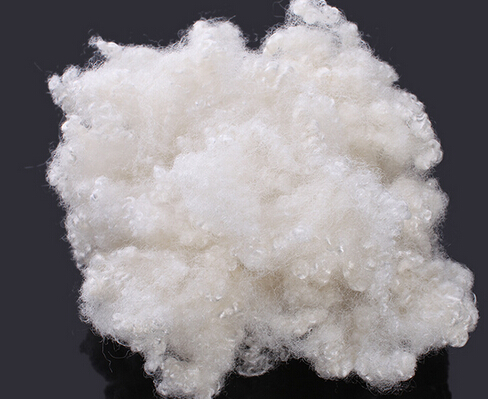
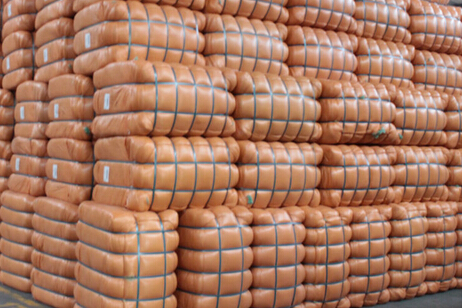
- Q: What's the difference between vinegar fiber and polyester fiber?
- Polyester: 1) polyester fiber is an important variety of synthetic fiber. It is the commodity name of polyester fiber in our country. It is a pure terephthalic acid (PTA) or terephthalic acid methyl ester two (DMT) and ethylene glycol (EG) as a fiber polymer, polyethylene terephthalate as raw materials by esterification or transesterification and polycondensation prepared (PET), the spinning and postprocessing fibers.
- Q: Can polyester fabric come into direct contact with the skin?
- First of all, say yes. If not, then it's not fabric.
- Q: Polyester fiber, polyester, acrylic, spandex have any harm to the body?
- However, synthetic fiber (polyester, acrylic, nylon) the moisture absorption rate of only 0.4% to 3%, such as underwear materials, due to its poor hygroscopicity, skin sweat not easy absorption of the fabric and the evaporation of sweat volatile retention in the skin after leaving salt residue, clogged pores, skin irritation easy to cause "chemical dermatitis".
- Q: What are polyester fibers and washing methods?
- Like other synthetic fibers, polyester fibers do not carry dirt as easily as natural fibers because of processing methods. Its hydrophobic properties on the surface reject hydrophilic dirt, but oil stains can easily cause spots, or even penetrate into the interior of the fiber, making it time and heat to wash them away. The removal of dye staining on the polyester fiber, are the main factors to consider when designing the detergent. Polyester and cotton blend very well, usually polyester ratio of 40%~60%, and wool and wool blend ratio is slightly smaller. Natural fibers have a good feel and comfort, and moisture absorption, but polyester fiber is not. The blend is made from ready made blends rather than monofilament.Like other synthetic fibers, polyester fibers do not require heavy-duty detergents. Its hydrophobic properties have strong resistance to water solubility, whether it is acid or alkali. Pay attention to the lipophilicity of polyester fiber when designing detergent.
- Q: What's the difference between high-density and solid wood boards?
- MDF, also called fiberboard. Wood fiber or other plant fiber as raw material, the use of urea formaldehyde resin or other applicable adhesive made of artificial board, according to its density, divided into high-density panels, MDF, low-density panels. MDF is easy to reprocess because of its soft and impact resistance. In foreign countries, MDF is a good material for making furniture. However, the quality of MDF in our country has yet to be improved due to the fact that the standard of the national standard is several times lower than that of the international standard.
- Q: What's the difference between a silver fiber radiation suit and a metal fiber radiation suit?
- Buy radiation-proof clothes first consideration is the radiation effect and quality. Secondly, comfort is also very important. Pregnant women would feel hot. If you buy a waterproof cloth as the radiation-proof clothes in her body. Even more uncomfortable. So buy anti radiation clothes first is radiation proof material do what.
- Q: What are environmentally friendly fibers?
- Bamboo fiber is a kind of cellulose fiber extracted from natural bamboo. It is the fifth natural fiber after cotton, hemp, wool and silk. Bamboo fiber has the characteristics of good air permeability, instant water absorption, strong abrasion resistance and good dyeing property. Meanwhile, it has the functions of natural antibacterial, bacteriostasis, mite removal, deodorization and anti ultraviolet. Experts point out that bamboo fiber is a kind of natural environmental friendly green fiber in the true sense. Bamboo fiber textiles are popular with consumers because they completely replicate the inherent characteristics of bamboo fibers, and their demand for products increases year by year.
- Q: Carbon nanotubes and carbon nanofibers are the same thing? What's the connection?
- Carbon nanotubes, as one-dimensional nanomaterials, are lightweight, hexagonal, and perfectly connected with many unusual mechanical, electrical, and chemical properties. In recent years, with the development of carbon nanotubes and nano materials, the broad application prospects of carbon nanotubes and nanomaterials have been emerging. Carbon nanotubes, also known as buckytubes, is a kind of special structure (radial size to the nanometer scale, shaft size of micrometer, both ends of the pipe are basically closed) one-dimensional quantum materials. Carbon nanotubes mainly consist of hexagonal carbon atoms and form coaxial tubes of several layers to tens of layers. The distance between layers is fixed, about 0.34nm, and the diameter is generally 2~20 nm. And according to the different orientations of the carbon hexagon along the axial direction, they can be divided into three types: zigzag, armchair and spiral. Among them, the spiral carbon nanotubes have chirality, while zigzag and armchair carbon nanotubes do not have chirality.
- Q: What is the difference between particleboard, solid wood multilayer board and MDF? What are the advantages and disadvantages?
- Also known as a particle board, bagasse board, made of wood or other lignocellulosic materials, after the application of adhesive, heat and pressure under the synthetic glue board. In the production process, the general use of formaldehyde based adhesives, so the finished product will release more or less free formaldehyde, when the content of free formaldehyde exceeds certain limits, it will affect human health.
- Q: What is involved?
- Is the full name of viscose viscose fiber. It is divided into viscose filament and viscose staple fiber, where we only focus on viscose filament yarn. Viscose - also called rayon, silk, viscose filament.
Send your message to us
Polyester Staple Fiber for Filling Pillows
- Loading Port:
- China main port
- Payment Terms:
- TT OR LC
- Min Order Qty:
- 10 m.t.
- Supply Capability:
- 5000 m.t./month
OKorder Service Pledge
OKorder Financial Service
Similar products
Hot products
Hot Searches



